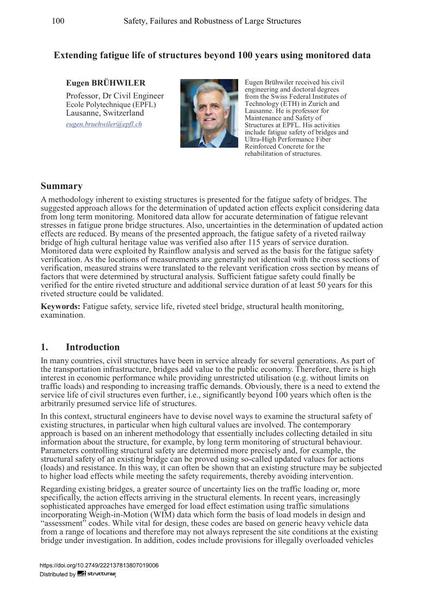Extending Fatigue Life of Structures Beyond 100 Years Using Monitored Data

|
|
|||||||||||
Bibliographic Details
| Author(s): |
Eugen Brühwiler
|
||||
|---|---|---|---|---|---|
| Medium: | conference paper | ||||
| Language(s): | English | ||||
| Conference: | IABSE Workshop: Safety, Failures and Robustness of Large Structures, Helsinki, Finland, 14-15 February 2013 | ||||
| Published in: | IABSE Workshop, 14-15 February 2013, Helsinki | ||||
|
|||||
| Page(s): | 100-109 | ||||
| Total no. of pages: | 10 | ||||
| Year: | 2013 | ||||
| DOI: | 10.2749/222137813807019006 | ||||
| Abstract: |
A methodology inherent to existing structures is presented for the fatigue safety of bridges. The suggested approach allows for the determination of updated action effects explicit considering data from long term monitoring. Monitored data allow for accurate determination of fatigue relevant stresses in fatigue prone bridge structures. Also, uncertainties in the determination of updated action effects are reduced. By means of the presented approach, the fatigue safety of a riveted railway bridge of high cultural heritage value was verified also after 115 years of service duration. Monitored data were exploited by Rainflow analysis and served as the basis for the fatigue safety verification. As the locations of measurements are generally not identical with the cross sections of verification, measured strains were translated to the relevant verification cross section by means of factors that were determined by structural analysis. Sufficient fatigue safety could finally be verified for the entire riveted structure and additional service duration of at least 50 years for this riveted structure could be validated. |
||||
| Keywords: |
service life structural health monitoring fatigue safety riveted steel bridge examination
|
||||
